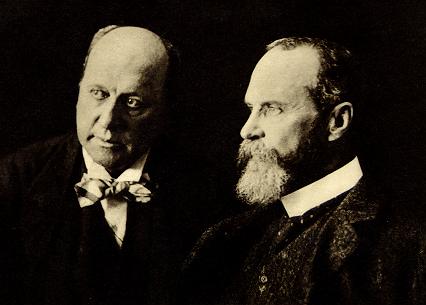"By Sara Murray
A roundup of economic news from around the Web.
- Recession Recovery & Unemployment: CalculatedRisk explains the scenario that would have to play out in initial unemployment claims to indicate the recession was ending. “Typically the four-week average peaks near the end of a recession. Also important - in the last two recessions, initial unemployment claims peaked just before the end of the recession, but then stayed elevated for a long period following the recession - a ‘jobless recovery’. There is a good chance this recovery will be very sluggish too, and we will see claims elevated for some time (although below the peak). We need to see a significant decline in the four-week average before we start talking about the peak. In a note today, Goldman Sachs economist Seamus Smyth estimated a significant decline as: ‘Roughly speaking, a 20,000 decline in the 4-week moving average corresponds to a 50% probability that the peak has already been reached, and a 40,000 improvement to a 90% probability.’ So we need to see the four-week average decline by 20,000 to 40,000 or more. Don’t hold your breathe…”
- GSEs, Take Two: Peter J. Wallison, writing on AEI about the Obama Administration’s plan for restructuring the financial system, argues that “it is no exaggeration to say that the proposal will create what are essentially government-sponsored enterprises (GSEs) like Fannie Mae and Freddie Mac in every sector of the financial economy,” by designating some companies as systemically important. Among the potential consequences: “The dangers to competition inherent in the administration’s plan arise in two ways: direct benefits to firms that offer products enhanced by the apparent financial soundness of the firm that offers them, and indirect benefits through a lower cost of funds for firms that are perceived to be less risky than their competitors. In insurance, for example, where the financial soundness of a company could make a competitive difference, the companies that can boast that they are too big to fail are likely to be more successful in attracting customers than their smaller competitors. Similarly, but more indirectly, firms that can boast that they are systemically important and thus too big to fail would–like Fannie Mae and Freddie Mac–appear less risky as borrowers than firms that are not protected by the government, and this will produce lower financing costs. Eventually, these firms will be able to use their superior financing opportunities to drive competition from their markets. Overall, the systemically significant firms will be subject to less market discipline, will be able to take more risks than others, will grow larger in relation to others in the same industry, and will gradually acquire more and more of their less successful competitors. Eventually, we will see a market much like the housing market that Fannie and Freddie came to dominate, with a few giant companies, chosen by the government, that have pushed out all significant competition.”
- Bank Plan “Truths”: Brad Delong, writing on his blog, describes the three “truths” the Obama Administration could use to sell its banking programs. Among them, “The banks have us by the plums,” “We have to play out the hand before we ask for a New Deal,” and a particularly good one, “The government has a chance to make a fortune: Just as in 1999 and 2005 financial markets were ruled by irrational exuberance, now they are ruled by irrational pessimism. Because of this irrational pessimism, businesses selling stocks and bonds cannot obtain financing that makes it profitable for them to expand–and so unemployment is high. But the government is not irrationally pessimistic, and is ‘patient capital’: the government can buy up financial assets and so raise their price, boost employment, and then hold the assets until maturity and very likely make a fortune. It can do good for the economy and the country and do well by its own finances at the same time. It is true that financiers who ride-alongside, front-run, and manage the government’s portfolio are very likely to make fortunes too, but much smaller fortunes than the government…If the Obama administration were selling any of these three lines of narrative–or were selling all of them–it seems likely to me that it would be having more success is building support for its strategy. But I do not think that it is selling any of these narrative lines to make sense of its policies. Indeed, I do not know what the narrative story it wants to tell about the current situation is.”
Wallison:
“Although the rescue of Bear temporarily calmed the markets, it led to a form of moral hazard–the belief that in the future governments would rescue all financial institutions larger than Bear. Market participants simply did not believe that Lehman, just such a firm, would not be rescued. This expectation was shattered in September 2008 when Lehman was allowed to fail, leading to exactly the kind of reappraisal of the financial health and safety of other institutions described by Kaufman and Scott. That is why the market froze at that point; market participants were no longer sure that the financial institutions they were dealing with would be rescued, and thus it was necessary to examine the financial condition of their counterparties much more carefully. For a period of time, the world’s major banks would not even lend to one another. So what happened after Lehman was not the classic case of a large institution’s failure creating losses at others–the kind of systemic risk that has stimulated the administration’s effort to regulate systemically important firms. It was caused by the weakness and fragility of the financial system that began almost a year earlier, when the quality of MBS and other asset-backed securities was called into question and became unmarketable. If Lehman should have been bailed out, it was not because its failure would have caused losses to others–the reason for the designation of systemically important firms–but because the market was in an unprecedented condition of weakness and fragility. ”
Yes. That’s the whole point. I was saying this before Lehman crashed. The investors were acting under the assumption that Lehman would be saved. All human actions are understandable only when you consider the context and presuppositions of the actors or agents. They panicked because there was no Plan B. It doesn’t matter if we approve of the context or not. All scenarios must take the real world context and presuppositions into account. Contrary to what is put forth, going against presuppositions is a very dangerous endeavor. My proof: Lehman!
With a housing bubble in place, the fear was a Debt-Deflationary Spiral. We’ve had a slow-motion version since Lehman. AIG would have led to a much quicker and harder to slow down spiral. That would have been a trap that no one really knows how to get out of.
Going forward, we need to get rid of these implicit guarantees and domino arrangements. That should be the lesson that we have just learned. However, allowing AIG to implode and a possible Debt-Deflationary Spiral to begin would have been a terrible move. Yikes!
DeLong:
“If the Obama administration were selling any of these three lines of narrative–or were selling all of them–it seems likely to me that it would be having more success is building support for its strategy.”
I used to think so as well, but the time for talk is over. The Obama administration probably believes that, at this point, things will have to actually get better in the real world for people to listen to anything that they say. They’re the government, after all, even if they’re my party.







































No comments:
Post a Comment